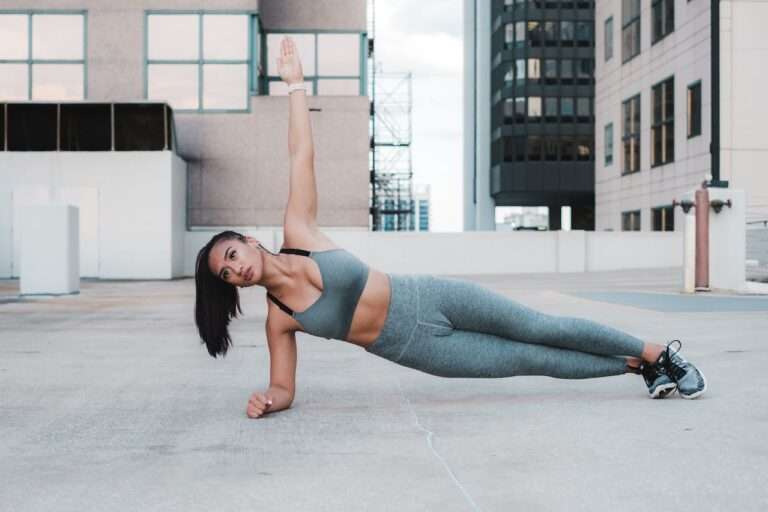A Full Guide to Calisthenics Upper Body Workout

Hey there, fitness enthusiasts! Are you ready to take your upper body strength to new heights without stepping foot in a gym? Look no further, because we’re diving headfirst into the world of “Calisthenics Upper Body Workouts” – the ultimate guide to sculpting a powerful and chiseled upper body using nothing but your own body weight. Whether you’re a beginner exploring the world of calisthenics or a seasoned pro looking to spice up your routine, we’ve got the lowdown on effective exercises, smart techniques, and pro tips that will help you crush your fitness goals. Get ready to push, pull, and plank your way to a stronger, more defined upper body – all while enjoying the freedom of working out anytime, anywhere. Let’s flex those muscles and get started!
Importance of Upper Body Strength
Upper body strength plays a pivotal role in daily activities, athletic performance, and overall health. A strong upper body provides the foundation for functional movements, making tasks like lifting, pushing, and pulling easier and safer. It contributes to better posture, reducing the risk of strain-related discomfort. Beyond practicality, upper body strength enhances sports performance, aiding in activities that require power, accuracy, and stability.
Furthermore, a well-developed upper body not only boosts self-confidence but also supports a balanced physique. By engaging muscles in the shoulders, chest, back, and arms, individuals can achieve improved muscle tone and definition. Whether for practicality, athleticism, or aesthetics, cultivating upper body strength through targeted exercises promotes a healthier, more capable, and resilient body.
Designing an Effective Calisthenics Upper Body Workout Routine
To achieve maximum benefits and a low risk of injury, designing an efficient calisthenics upper body training program demands a systematic approach. Here is a step-by-step tutorial on developing a balanced routine:
A. Warm-up and Mobility Exercises:
Begin with dynamic stretches and mobility exercises to prepare your muscles and joints for the upcoming workout. Arm swings, shoulder circles, and wrist rotations are great for priming the upper body.
B. Structuring the Workout Routine:
- Choosing Exercises Based on Skill Level: Customize your routine to your skill level. Beginners might start with modified push-ups, assisted pull-ups, and incline dips. As you progress, work towards standard push-ups, pull-ups, and dips.
- Repetitions and Sets: Aim for 3-4 sets of each exercise. Start with 8-12 repetitions for each set. Adjust the rep range as needed – lower reps with higher intensity for strength, or higher reps for endurance and muscle definition.
- Rest Intervals: Rest between sets is crucial. Allow 1-2 minutes for compound movements like pull-ups and push-ups, and 30-60 seconds for less intense exercises. This balance optimizes both strength gains and cardiovascular benefits.
C. Using Progressive Overload for Continued Gains:
To keep progressing, gradually increase the challenge. Add reps, modify the exercise angle, or reduce assistance over time. This principle of progressive overload ensures consistent growth.
D. Combining Pulling and Pushing Movement:
A balanced push workout routine addresses both pushing and pulling movements. Include exercises like push-ups and dips to target pushing muscles (chest, shoulders, triceps) and exercises like pull-ups and rows for pulling muscles (back, biceps).
The goal is to build muscle and increase overall upper body strength while continuing to refine form and technique.
Also read: Push pull leg split
Upper Body Calisthenics Workout
The goal of this workout is to build muscle and increase overall upper body strength while continuing to refine form and technique.
1. Push-Ups:
- Perform push-ups with your hands placed directly under your shoulders.
- Keep your body in a straight line throughout the movement.
- Aim for 12-15 reps.
Also read: Calisthenics push workout routine
2. Pull-Ups:
- Use a pull-up bar and perform pull-ups with an overhand grip.
- Focus on squeezing your shoulder blades together as you pull up.
- Aim for 10-15 reps.
3. Dips (Using Parallel Bars or a Bench):
- Place your hands on parallel bars or a sturdy bench behind you.
- Lower your body by bending your elbows.
- Push yourself back up to the starting position.
- Aim for 10-15 reps.
4. Inverted Rows (Using a Bar or TRX):
- Lie on your back under a bar or TRX straps placed at waist height.
- Grab the bar or straps with an overhand grip and pull your chest towards the bar.
- Lower yourself back down.
- Aim for 10-15 reps.
5. Planche Lean:
- Get into a push-up position with your hands positioned slightly forward.
- Lean your body forward while keeping your feet off the ground.
- Hold the position for 20-30 seconds.
6. Hanging Knee Raises:
- Hang from a pull-up bar with an overhand grip.
- Bend your knees and lift them towards your chest.
- Lower your legs back down in a controlled manner.
- Aim for 10-12 reps.
7. Plank:
- Start in a push-up position but with your weight supported on your forearms.
- Keep your body in a straight line from head to heels.
- Hold the position for 60 seconds.
Tips for Progression and Advancement
- Variations: Gradually introduce advanced variations of exercises to keep your muscles guessing.
- Equipment: Incorporate equipment like parallettes or rings for added challenge and variety.
- Tracking Progress: Keep a workout journal to monitor your progress and set realistic goals.
Common Mistakes to Avoid
- Overtraining: Give your muscles time to recover; avoid excessive training that can lead to injury.
- Proper Form: Maintain correct form to prevent strain and injury.
- Warm-up and Cooldown: Never skip warm-up and cooldown routines to prevent injury and aid recovery.
FAQs
How do I structure an effective calisthenics upper body workout routine?
Begin with a warm-up and mobility exercises, then choose a variety of upper body exercises based on your fitness level. Aim for 3-5 sets of each exercise, with rest intervals of 1-2 minutes between sets. Gradually increase repetitions and sets over time to challenge your muscles.
Can I use equipment for calisthenics upper body workouts?
Yes, you can incorporate equipment like parallel bars, rings, or parallettes to add variety and intensity to your workouts. These tools can make exercises more challenging and engage different muscle groups.
How often should I perform calisthenics upper body workouts?
The frequency depends on your fitness level and recovery capacity. Beginners might start with 2-3 workouts per week, while more advanced individuals can aim for 3-5 sessions. Listen to your body and allow adequate time for recovery.
What if I can’t do a certain exercise?
It’s okay to start with modified versions or assisted variations of exercises. Over time, as your strength improves, you’ll be able to progress to more challenging movements.






